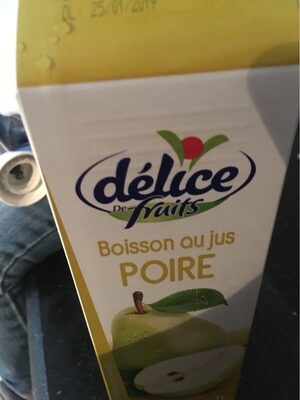Boisson au jus de poire - délice - 1 L
This product page is not complete. You can help to complete it by editing it and adding more data from the photos we have, or by taking more photos using the app for Android or iPhone/iPad. Thank you!
×
Barcode: 6191534802131 (EAN / EAN-13)
Quantity: 1 L
Packaging: Elopak, Brick, fr:Bouchon plastique
Brands: délice
Categories: Plant-based foods and beverages, Beverages, Plant-based beverages, Fruit-based beverages, Pear-based beverages
Labels, certifications, awards:
FSC, FSC Mix, Natural flavors, fr:Elopak
Origin of the product and/or its ingredients: Made in Tunisia
Manufacturing or processing places: Tunisie
Matching with your preferences
Environment
Carbon footprint
Packaging
Transportation
Report a problem
Data sources
Product added on by kiliweb
Last edit of product page on by aleene.
Product page also edited by autorotate-bot, ecoscore-impact-estimator, gmlaa, mci, openfoodfacts-contributors, packbot, yuka.DupPGY7VQ-UKE9zs7bI--RySC_zdIcAHAiMQog, yuka.FJpkF4aFMZZ7BPfq44kl9irnDM7qHaQJPlA_og, yuka.L7VhO97WONEKNfry2KA-_GGKHcjNCt1CNSAUoQ, yuka.RzZNTEw2VTRwNlZic2NJVTR5dnc1NGdzNjRTc2MzcW1FdWN0SVE9PQ.









